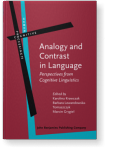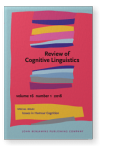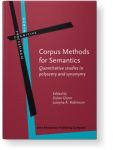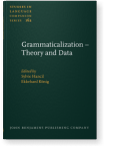Iwona Kokorniak
List of John Benjamins publications for which Iwona Kokorniak plays a role.
2022 Chapter 5. Contrast and analogy in aspectual distinctions of English and Polish: The case of think predicates Analogy and Contrast in Language: Perspectives from Cognitive Linguistics, Krawczak, Karolina, Barbara Lewandowska-Tomaszczyk and Marcin Grygiel (eds.), pp. 115–156 | Chapter
This chapter makes an attempt at finding contrasts and analogies in the aspectual system of Polish and English with the use of the Integrated Model of Aspect (Kokorniak 2018). The model employs categorisation and other conceptual mechanisms (Langacker 1987, 1999, 2009) in order to reveal that… read more
2018 Expressing i think that in Polish: A search for motivation Issues in Humour Cognition, Dynel, Marta (ed.), pp. 229–253 | Article
The paper investigates how four Polish mental predicates, signalling the subject’s of conception thinking process and representing the i think that conceptualisation, differ in usage and what motivates the difference. The verbs’ first person singular present tense forms, in an objective way,… read more
2014 The semasiological structure of Polish myśleć ‘to think’: A study in verb-prefix semantics Corpus Methods for Semantics: Quantitative studies in polysemy and synonymy, Glynn, Dylan and Justyna A. Robinson (eds.), pp. 223–251 | Article
The aim of the present chapter is to investigate the semasiological structure of the Polish verb myśleć ‘to think’ relative to the construal imposed by its prefixes. It juxtaposes the results of cognitive linguistic corpus-based introspective analysis with the results of a series of statistical… read more
2014 Grammaticalization of Polish mental predicate prefixes Grammaticalization – Theory and Data, Hancil, Sylvie and Ekkehard König (eds.), pp. 109–128 | Article
This article presents insights into grammaticalization mechanisms in an attempt to elucidate the status of the aspectual prefixes in Polish as semantically ‘heavy’ or semantically ‘light’. The verb myśleć ‘to think’ and its ten prefixes constitute the subject of investigation. The study employs… read more



